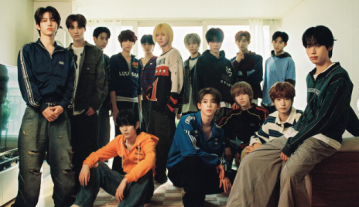British author Arthur C. Clarke once claimed that "any sufficiently advanced technology is indistinguishable from magic."
I'd argue that musical technology, from the earliest drums to the most contemporary doodads, has always been imbued with that magical quality.
In her riveting single from 2014, "Bird No Singing," Korean electronic producer Haihm uses the most modern examples of "magic" in her music.
Haihm is yet another part of the wave of impressive female synth artists coming out of Korea, including Shirosky and Kirara. As a classically trained pianist, the Seoul-based Haihm doesn't shy away from complexity and has the chops to back it up.
Originally released on the 2014 EP "Point 9," the track "Bird No Singing" demonstrates that while Haihm is a perfectly capable singer, she prefers to shy away from words and focus on pure music on this extended version of that track. Though her vocals do make some fleeting, albeit chopped-up appearances.
"Bird No Singing" opens with fleet snippets of vocal sound, nothing beyond a syllable. This has a sort of now-you-see-it-now-you-don't effect.
As I mentioned previously, magic.
The technique of popping sounds in and out of the mix at whim goes back to the heady days of early dub reggae, when producers would allow horns or other delayed-out instruments to be audible and then snatch them away. This created an effect that was impossible to duplicate in live performance, but through the magic of the recording studio, anything would soon be possible.
As "Bird No Singing" continues, that nod to the early days of dub mixing jujitsu remains a constant, while other elements come into play.
Strictly speaking, the only truly traditional musical element that makes itself heard throughout all seven minutes of "Bird No Singing" are three dulcet chords on what sounds like a Fender Rhodes. Beyond that, it's all technological manipulation.
Percussion plays a major part in the piece, but in a very untraditional way. Back in the days of strictly acoustic performances on recordings, the number of actual drums available to the performers might be limited to what a single drummer would be capable of playing, in even the most ostentatious cases, finite by nature. By using what could be any number of computer programs, Haihm is able to manipulate the pitch of her drums to nearly any pitch.
Suddenly, she has an impossibly huge range of "drums" to play with. Magic? You be the judge.
The low-pitched bass frequencies don't seem to aim to imitate any particular instrument, and the sweeps of sound that swoop through the mix borrow from the last few decades of analog or digital synthesizers. Time and space are rendered meaningless in this context.
Over the patient expanse of "Bird No Singing," Haihm is able to slowly build into a deserved saturation point. By the time the song has reached its climax, the drum programming doesn't resemble anything a "real drummer" could or would be able to play; it's the musical sound of machines going berserk.
Describing it may make the result sound wildly out of control, but of course, quite the opposite is true.
Haihm is able to use frenzy to indicate the kind of catharsis we seek from music, while operating from a place of total control.
The sense of chaos is a trick, or, as others might insist, an illusion.
Watch the music video for Haihm's 2014 single "Bird No Singing" RIGHT HERE
Jeff Tobias is a composer, musician and writer currently living in Brooklyn, New York. As of late, he has been studying arcane systems of tuning and working on his jump shot.









